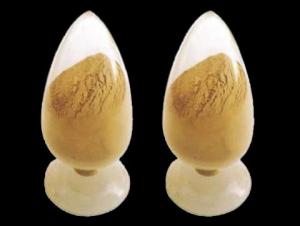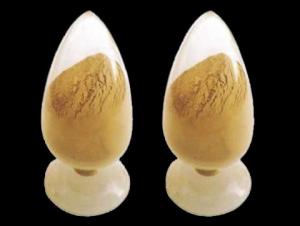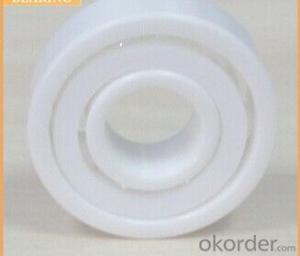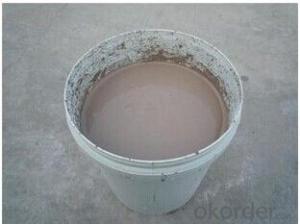Ceramic Lined Ceramic Ball Valve Product
- Loading Port:
- Qingdao
- Payment Terms:
- TT OR LC
- Min Order Qty:
- 1000 pc
- Supply Capability:
- 3000 pc/month
OKorder Service Pledge
OKorder Financial Service
You Might Also Like
Application:
Applied in any media, expect HF (Hydrofluoric Acid) or glass solution, with max. temperature up to 500°C or max pressure 5.0 Mpa, such as high corrosion, high attrition and middle pressure.
Structural: 3-part flange type float ball valve Flange standards follow DIN/ANSI/API/JIS
l Excellent wear-proof property of ceramic enables this valve have high reliability and prolonged lifespan which is 2-4times as much as Titannium Alloy and Monel Metal valve.
l Elastic O ring fit between metal part and ceramic part makes the whole part high sealing capacity, unables the two parts blind, and avoid the ball broken.
l Valve steams are selected among 316/316L stainless steel, HC alloy, Monel Alloy, structural ceramic.
l Completely symmetric design ensures dual leak-proof and two-direction usage to prolong its lifespan to twice.
All parts that connect the medium are made of structural ceramics with extremely high chemical stability and hardness (HRC 90), which is only inferior to diamond. So the valve features exceedingly high wear-proof capability, corrosion resisting, enduring capability, good heat insulation, small thermal expansion.
The valve is unique in granule medium of high hardness, or erosive soft granule and is the only choice for such medium. They are wisely used in FDG System, Slag system and LNCFS in power plant, saline water and distilling processes in alkali works, paper pulp system in paper mill, and so on.
The ball is processed by advanced polishing equipment and technology that can ensure high circularity, good surface quality,.
The self-lubricating capability of ZrO2, ensure the good sealing performance between the ball and its seat. It is thoroughly free from the defects of easy leakage, big torque, non-resistance sealing surface comparing with metal sealing valve.
ZrO2 Composition Chart of MZ Ceramic Ball Valve
NO. | Physical Property | Parameter |
1 | Crystal | >85% cubic, the rest monoclinic |
2 | Lg. Loss | 0.8%-1.0% |
3 | Average | 0.4-0.7um |
4 | Apparent Density | >0.4g/cc |
5 | ZrO2 Purity | >99.95% |
6 | Tapped Density | >0.8g/cc |
- Q:How do monolithic refractories perform in ladle lining applications in the iron and steel industry?
- Monolithic refractories are widely used in ladle lining applications in the iron and steel industry due to their excellent performance and durability. These refractories, which are made from a single material composition, offer numerous advantages over traditional brick linings. One of the key benefits of monolithic refractories in ladle lining applications is their superior resistance to thermal shock. Ladles in the iron and steel industry are subjected to extreme temperature fluctuations during the steelmaking process, including the pouring of molten metal and the subsequent cooling. Monolithic refractories are specifically designed to withstand these rapid temperature changes without cracking or spalling, ensuring the integrity of the ladle lining. In addition to thermal shock resistance, monolithic refractories also exhibit excellent resistance to chemical attack. Ladles in the iron and steel industry are exposed to highly corrosive molten metal and slag, which can degrade the lining materials over time. However, monolithic refractories are formulated with high-quality raw materials that offer exceptional chemical stability, preventing the erosion and penetration of corrosive substances. Furthermore, monolithic refractories provide superior mechanical strength compared to traditional brick linings. This is particularly important in ladle lining applications, as the lining needs to withstand the weight of the molten metal and the mechanical stresses associated with ladle handling and transportation. Monolithic refractories have excellent load-bearing capabilities, ensuring the structural integrity of the ladle lining even under heavy loads. Another advantage of monolithic refractories is their ease of installation. Unlike brick linings that require meticulous bricklaying, monolithic refractories can be installed using various techniques, such as gunning or casting, allowing for faster and more efficient lining repairs or replacements. This reduces downtime during ladle maintenance, leading to increased productivity and cost savings for iron and steel manufacturers. Overall, monolithic refractories perform exceptionally well in ladle lining applications in the iron and steel industry. Their resistance to thermal shock and chemical attack, superior mechanical strength, and ease of installation make them an ideal choice for ensuring the longevity and reliability of ladles in steelmaking operations.
- Q:How do monolithic refractories withstand thermal shock and mechanical stress?
- Monolithic refractories are designed to withstand thermal shock and mechanical stress due to their unique composition and installation process. These refractories are made from a single, continuous material, eliminating any joints or seams that could weaken the structure. Additionally, they have a high thermal conductivity which allows them to efficiently distribute and dissipate heat, minimizing thermal gradients that can cause cracking. Furthermore, the installation technique involves forming the refractory in situ, ensuring a tight fit and reducing the likelihood of mechanical failure. Overall, the combination of their composition, thermal conductivity, and installation method enables monolithic refractories to withstand thermal shock and mechanical stress effectively.
- Q:What are the cost implications of using monolithic refractories in the iron and steel industry?
- The cost implications of using monolithic refractories in the iron and steel industry can be both positive and negative. On the positive side, monolithic refractories are often more cost-effective in terms of installation and maintenance compared to traditional brick refractories. They can be easily applied and repaired, reducing downtime and labor costs. Additionally, monolithic refractories have better thermal efficiency, leading to energy savings and lower operating costs. However, there are also potential drawbacks to consider. Monolithic refractories may have a higher initial material cost compared to bricks. They can be more susceptible to chemical attacks and erosion, requiring more frequent replacements. The selection and installation of monolithic refractories also require specialized expertise, which can increase costs if not managed properly. Overall, the cost implications of using monolithic refractories in the iron and steel industry depend on various factors such as the specific application, maintenance practices, and expertise available. Proper evaluation and decision-making are crucial to ensure the best balance between initial investment and long-term cost savings.
- Q:What are the common manufacturing processes used for monolithic refractories?
- The common manufacturing processes used for monolithic refractories include: 1. Mixing: The first step in the manufacturing process is the proper mixing of the raw materials. This involves carefully measuring and combining the different ingredients to ensure a homogeneous mixture. 2. Wetting: Once the ingredients are mixed, water or a liquid binder is added to wet the mixture. This helps in improving the workability and plasticity of the material, making it easier to shape and mold. 3. Forming: The wet mixture is then shaped into the desired form using various techniques such as casting, gunning, ramming, or extrusion. Casting involves pouring the wet mixture into a mold and allowing it to solidify, while gunning uses a spray gun to apply the material onto a surface. Ramming involves compacting the wet mixture into a mold using a ramming tool, and extrusion involves forcing the wet mixture through a die to create specific shapes. 4. Drying: After forming, the shaped monolithic refractory is dried to remove any excess moisture. This is typically done in a controlled environment with specific temperature and humidity conditions to prevent cracking or warping. 5. Firing: Once dried, the monolithic refractory is fired at high temperatures to achieve its desired properties. This process, known as sintering, helps in bonding the particles together and increasing the strength and stability of the material. 6. Finishing: After firing, the monolithic refractory may undergo additional finishing processes such as grinding, polishing, or coating to improve its surface quality and enhance its performance. These common manufacturing processes ensure the production of high-quality monolithic refractories with consistent properties and performance characteristics.
- Q:What are the typical operating temperatures for monolithic refractories?
- The specific composition and type of refractory material determine the typical operating temperatures for monolithic refractories. Generally, these refractories are designed to endure high temperatures ranging from 1500°C (2732°F) to 1800°C (3272°F) and sometimes even higher. Industries such as steelmaking, cement production, glass manufacturing, and petrochemical processing commonly utilize these refractories, subjecting them to extreme thermal conditions. Temperature limits vary for different types of monolithic refractories. For example, basic refractories made of magnesia or dolomite can withstand temperatures up to 1800°C (3272°F). Conversely, alumina-based refractories typically handle temperatures up to 1700°C (3092°F). Silicon carbide-based refractories exhibit even higher temperature resistance, with the capacity to endure temperatures exceeding 2000°C (3632°F). Choosing the appropriate monolithic refractory material is crucial, considering the specific operating temperature requirements of the application. Using refractories beyond their recommended temperature limits may result in thermal shock, spalling, reduced performance, equipment failure, or safety hazards. Therefore, it is essential to consult with refractory manufacturers or experts in the field to ensure the correct selection and optimal performance of monolithic refractories in high-temperature applications.
- Q:Can monolithic refractories be used for the lining of blast furnace runners and troughs?
- Yes, monolithic refractories can be used for the lining of blast furnace runners and troughs. Monolithic refractories are versatile and can be formed into any shape or size, making them suitable for lining complex structures such as blast furnace runners and troughs. Additionally, monolithic refractories offer excellent thermal shock resistance and high mechanical strength, which are essential properties for withstanding the extreme conditions inside a blast furnace.
- Q:How do monolithic refractories perform in rotary kiln applications?
- Due to their unique properties and characteristics, monolithic refractories prove highly effective in rotary kiln applications. Unlike traditional brick and mortar refractories, these refractories are designed to be installed as a single, solid unit. One of the primary advantages of monolithic refractories in rotary kilns is their incredible ability to withstand high temperatures and thermal stresses. Operating at temperatures as high as 3000 degrees Fahrenheit, rotary kilns subject refractories to extreme conditions. However, monolithic refractories excel in handling such temperatures without cracking or failing, ensuring the longevity and reliability of the kiln. Another crucial performance aspect of monolithic refractories in rotary kilns is their resistance to chemical attack. Industries like cement production often employ rotary kilns, where the materials being processed can be highly corrosive. Monolithic refractories offer excellent protection against chemical attack, safeguarding the kiln from deterioration and extending its service life. Moreover, monolithic refractories are renowned for their exceptional thermal conductivity and insulation properties. This aids in maintaining consistent and efficient heat transfer within the kiln, thereby enhancing the overall energy efficiency of the process. Furthermore, the installation of monolithic refractories in rotary kilns is relatively quick and straightforward compared to traditional brick and mortar refractories. The monolithic materials can be cast or gunned into place, creating a seamless lining that eliminates the need for individual bricks and mortar joints. This not only saves time during installation but also minimizes the potential for weak points or gaps in the lining, guaranteeing a more durable and effective refractory system. In conclusion, monolithic refractories offer outstanding performance in rotary kiln applications. Their ability to withstand high temperatures, resist chemical attack, provide efficient heat transfer, and offer easy installation make them the preferred choice for industries relying on rotary kilns in their production processes.
- Q:How do monolithic refractories help in improving the quality of iron and steel products?
- Several ways exist in which monolithic refractories play a crucial role in enhancing the quality of iron and steel products. Firstly, these refractories are utilized for lining furnaces and other high-temperature equipment in the iron and steel industry. By offering excellent thermal insulation, monolithic refractories aid in maintaining a consistent and controlled temperature inside the furnace, thus ensuring efficient heating and melting of metals. Furthermore, the utilization of monolithic refractories aids in reducing heat loss, thereby enhancing the energy efficiency of the process. This not only leads to cost savings but also minimizes the environmental impact associated with high energy consumption. Additionally, the insulation properties of monolithic refractories contribute to the reduction of thermal stresses within the furnace, preventing cracks and other structural damages that could potentially affect the quality of the iron and steel products. Moreover, monolithic refractories possess exceptional resistance to chemical reactions, corrosion, and erosion caused by molten metals, slag, and other harsh substances. This resistance helps in maintaining the integrity of the refractory lining, preventing the contamination of iron and steel products by unwanted impurities. As a result, the quality of the final products, such as steel bars, sheets, or pipes, is enhanced, meeting the desired specifications and industry standards. Another advantage offered by monolithic refractories is their ability to provide a sleek and pristine lining surface. This smoothness minimizes the adherence of slag, molten metal, and other by-products, thereby reducing the risk of defects and ensuring a higher-quality finish for the iron and steel products. Additionally, the clean lining surface facilitates easy maintenance and cleaning, enabling efficient and effective operations. In conclusion, monolithic refractories significantly contribute to the improvement of iron and steel product quality through their exceptional thermal insulation, resistance to chemical reactions, erosion, and corrosion, as well as their ability to provide a sleek and pristine lining surface. By ensuring consistent temperatures, reducing heat loss, preventing structural damages, and maintaining a clean environment, monolithic refractories enhance the overall efficiency and integrity of the iron and steel production process, resulting in high-quality end products.
- Q:What are the main applications of monolithic refractories in the iron and steel industry?
- The iron and steel industry heavily relies on monolithic refractories due to their versatile applications. In this industry, monolithic refractories play a vital role in several areas: 1. Blast Furnaces: When converting iron ore into molten iron, blast furnaces are crucial components. The inner walls of blast furnaces are lined with monolithic refractories, which provide insulation and protection against extreme temperatures and corrosive environments. These refractories maintain the furnace's integrity and efficiency, ensuring seamless operation and extended service life. 2. Ladles and Tundishes: Ladles and tundishes are vessels used to transport molten metal from blast furnaces to the next processing stage. Monolithic refractories are used to line these vessels, as they can withstand high temperatures and chemical reactions that occur during metal transfer. They prevent heat loss, minimize metal contamination, and enhance overall process efficiency. 3. Steelmaking Furnaces: Electric arc furnaces (EAFs) and basic oxygen furnaces (BOFs) are among the various types of steelmaking furnaces that extensively employ monolithic refractories. These furnaces require lining materials that can withstand extreme temperatures, chemical reactions, and mechanical stresses. Monolithic refractories provide exceptional thermal insulation, erosion resistance, and structural integrity, enabling efficient and reliable steel production. 4. Continuous Casting: Continuous casting is a widely used method for producing large quantities of steel. During this process, molten steel is continuously poured into a water-cooled mold, solidifying it into solid steel billets or slabs. Monolithic refractories are used to line the mold's walls and floor, ensuring thermal insulation and preventing the solidified steel from adhering to the mold. They help maintain the desired casting shape and improve the final product's quality. 5. Reheating Furnaces: Reheating furnaces are used to heat steel billets or slabs before further processing. Monolithic refractories line the walls and roof of these furnaces since they can withstand high temperatures and thermal cycling. They provide insulation, reduce heat loss, and enhance the reheating process's efficiency. In conclusion, monolithic refractories are indispensable in the iron and steel industry as they possess high-temperature resistance, chemical stability, and mechanical strength. They contribute to the durability and efficiency of various equipment and processes, ensuring seamless operations and high-quality steel production.
- Q:How do monolithic refractories resist high temperatures?
- Monolithic refractories are designed to resist high temperatures due to their unique composition and structure. These refractories are made from a single piece or material, unlike traditional refractory bricks that are composed of multiple pieces. The main reason why monolithic refractories can resist high temperatures is their high melting point. These refractories are made from materials such as alumina, silica, and magnesia, which have high melting points ranging from 1650°C to 2000°C. This means that they can withstand extreme temperatures without undergoing significant deformation or melting. Furthermore, monolithic refractories possess excellent thermal stability. They have low thermal conductivity, which means they can effectively insulate against heat transfer. This property allows the refractories to maintain their structural integrity even when exposed to rapid temperature changes or thermal shocks. In addition, the monolithic nature of these refractories provides them with enhanced resistance to thermal stress. Unlike traditional refractory bricks, monolithic refractories do not have joints or seams that can be vulnerable to thermal expansion and contraction. This makes them more resistant to cracking or spalling when subjected to high temperatures. Moreover, monolithic refractories can form a protective layer or slag on their surface when exposed to high temperatures. This slag acts as a barrier and prevents direct contact between the refractory material and the hot gases or molten metals, reducing the risk of chemical reactions or corrosion. Overall, the combination of high melting point, thermal stability, resistance to thermal stress, and the ability to form protective slag makes monolithic refractories highly effective in resisting high temperatures. They are widely used in various industries, including steel, cement, glass, and petrochemical, where they are exposed to extreme heat conditions.
1. Manufacturer Overview |
|
|---|---|
| Location | |
| Year Established | |
| Annual Output Value | |
| Main Markets | |
| Company Certifications | |
2. Manufacturer Certificates |
|
|---|---|
| a) Certification Name | |
| Range | |
| Reference | |
| Validity Period | |
3. Manufacturer Capability |
|
|---|---|
| a)Trade Capacity | |
| Nearest Port | |
| Export Percentage | |
| No.of Employees in Trade Department | |
| Language Spoken: | |
| b)Factory Information | |
| Factory Size: | |
| No. of Production Lines | |
| Contract Manufacturing | |
| Product Price Range | |
Send your message to us
Ceramic Lined Ceramic Ball Valve Product
- Loading Port:
- Qingdao
- Payment Terms:
- TT OR LC
- Min Order Qty:
- 1000 pc
- Supply Capability:
- 3000 pc/month
OKorder Service Pledge
OKorder Financial Service
Similar products
New products
Hot products
Related keywords

























